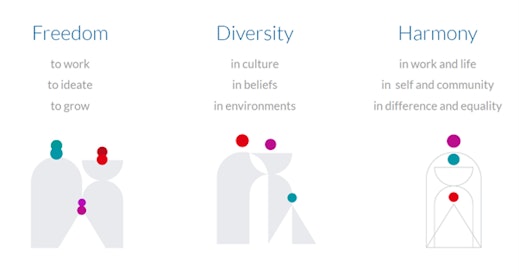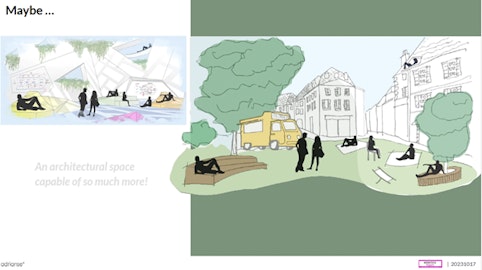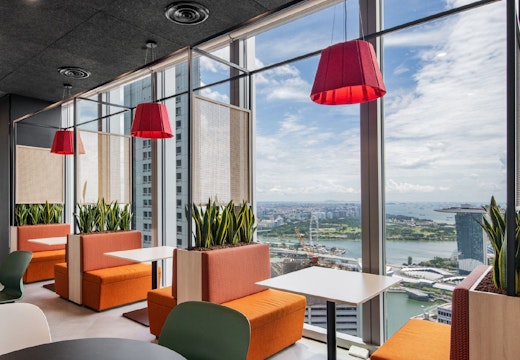How the hybrid model impacts connections between work and health
Hybrid working offers more choice to employees but is complex to manage. The second in an article series with Adrianse looks at the challenge of creating a more holistic connection between health and work
The relationship between work and health has a long lineage going back to some of the earliest safety-and-welfare legislation for workers in the offices and factories of the industrial era.
However, there is no doubt that the rise of hybrid working in the aftermath of the global pandemic poses a new challenge to wellbeing in the workplace, which requires a deeper understanding of how work and health interrelate.
Hybrid is a model which asks new questions of both organisations and individuals, and its effects remain novel and untested. Investment in new video-calling technologies that support remote work, the re-writing of HR policies that bring flexible practices from the margins to the mainstream, and the repurposing and redesign of office space to fit this new model are all happening at pace. But how are people coping with these changes?
‘Hybrid is a model which asks new questions of both organisations and individuals…’
This article is the second in a series considering the multi-faceted relationship between health and work. It is a collaboration between global design firm Adrianse and WORKTECH Academy which seeks to explore new insights and connections. According to Adrianse director Chinmayee Ananth, ‘We need to think more deeply and conceptually about how healthy work can be defined from multiple perspectives.’ Read the first article here.
Striking a balance
The shift to hybrid working in the knowledge-based economy has a parallel in the rise of hybrid health. More widespread use of virtual consulting and digital diagnostics in health systems around the world will, in many cases, replace a face-to-face meeting with a clinician with an online appointment. This can be disconcerting for patients, but it can also speed up getting a medical appointment. There are pros and cons to the approach – and it is the same picture in hybrid working where efficiencies of operation must be counter-balanced against the psychological comfort of workers.
In the early stages of the global pandemic, knowledge workers reported a rise in wellbeing due to having greater autonomy and flexibility over where and how they worked, and a better work-life balance which meant that they could incorporate caring responsibilities into their schedule.
This ‘honeymoon period’ didn’t last. Tracking studies of employee sentiment by Gallup and others soon revealed feelings of isolation from their teams, anxiety and burnout. Microsoft email and video-calling data showed an alarming extension of the working day with chats, calls and meetings extending deep into the night. The health impacts of the hybrid model were no longer entirely positive. Intrinsic tensions were emerging.
As the lockdowns ended and companies began to orchestrate a return to the office as part of a new hybrid model, new health-related concerns arose. Employees resisted going back to commuting on busy roads and trains, and working in crowded offices with poor air quality, which they regarded as dangerous. They wanted to see colleagues again on a regular basis to maintain good mental health but were unsure if the people they needed to interact with would be attending the office on the same day.
Bridging the gap
Today there is a growing divide between company bosses seeking as a complete a return to the office as they can manage in order to sustain company culture and innovation, and employees who want as much flexibility as possible in order to support their health and wellbeing. Can this schism be healed? Can hybrid happen in a way that works for all?
Adrianse believes that better workspace design can help to bridge the gap. Providing workspaces that specifically foster collaboration, learning and innovation brings new purpose to the office and creates more reasons to go there regularly.
A lot of the recent debate about workplace wellbeing has focused on new technologies such as workplace apps that enable you to bring your team together, sensors that monitor occupancy levels and environmental conditions such as air quality, and video conferencing suites seeking to provide better meeting equity for all.
However, it is design of physical workspace that defines the essential experience for people and orchestrates that deeper relationship between work and health. Underpinning this approach is a conceptual shift from the office as a factory or machine to the central idea of the workplace as community and cultural hub, with softer, more organic design contours supporting a happier, healthier workforce.
From factory to community
Adrianse’s work in India for manufacturer Bosch demonstrates this thinking. In Pune, for example, the firm has created a 100,000 sq ft office for 700 Bosch staff, transforming a traditional ‘factory-style’ office with a staff ‘canteen’ and lots of cubicles into a colourful cultural hub with spaces for community, exchange, innovation and celebration. Staff attrition rates have reduced significantly as a result.

Image: courtesy of Adrianse*
This new hybrid space for Bosch employees returning to the office (around 70 per cent are doing so) looks and feels very different from the standard mechanistic tech facility. Changing mindsets and working practices was more difficult than changing the physical spaces, says Adrianse director Chinmayee Ananth.
‘Changing mindsets and working practices was more difficult than changing the physical spaces’- Adrianse director Chinmayee Ananth
However, the Bosch management was willing to go on a journey with the Adrianse design team to create an IT experience centre that provides a much healthier environment for social interaction and collaboration, even if health and wellbeing was not explicit in the briefing process. Adrianse director Jayanth Gopal adds: ‘It is about being user-predicted and not just user-centric’. He quotes the maxim that changing the way you work will change the way you think.
In this context, Gopal adds that the field of brain science, with psychological and neural research into what makes us happy at work, has much to add to the debate. When we feel stressed, our relationship with colleagues deteriorates and job satisfaction diminishes. Office design that supports the healthy brain by creating community or providing meaning at work has much to contribute to the shifting parameters of health and work.
Ultimately, hybrid working readjusts how we think about work and health across a continuum of spaces. Chinmayee Ananth is in no doubt that, supported by the right workspace design, the hybrid model can be health-inducing. She explains: ‘Hybrid equals choice. It’s already easier on the mind in terms of health. You can escape the chaos of home when you need to work in the office. But when you need to work from home, you can do that too.’

Image: courtesy of Adrianse*
The next article in this series will explore how natural systems in the workplace contribute to human health, going beyond natural materials to explore interventions that mimic the patterns and networks of nature.








